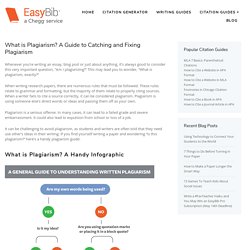

Tech You Can Do: Better Google Searching You Can Do. A big part of my job is having conversations with teachers about ideas they have for their classrooms.

I recently had a conversation with a teacher who wanted to know what would be a safe search engine for her students. This teacher was asking with the best of intentions - wanting to do what she can to protect her students. I completely understand her thinking, but I challenged her idea of using a "kid safe engine". Instead, I proposed this ... we spend the same time teaching her students how to perform "better" searches on the search engine we all know they will use tomorrow and for years in the future.
She agreed, and I agreed to join this conversation with her students. Research is an important skill that is taught in some way at each grade level. Teaching students how to do better internet searches can be a very valuable lesson ... and one well worth the time. How about we take 30 minutes and give students - of all ages - some direct instruction and practice? Social Media - MLA Citation Guide (8th Edition) - LibGuides at Columbia College (BC) Video Lesson: Primary and Secondary Sources. Videos & Infographics. Visual Guide to MLA 8 Containers - EasyBib Blog. When MLA 8th edition was released in 2016, it changed MLA’s approach to citing.

No longer do writers and researchers have to conform citations around a source type; MLA format now centers around a standard set of elements for all source types. With this new approach was also a new concept: Containers. According to the official MLA Style Center, a container is: “When the source being documented forms part of a larger whole, the larger whole can be thought of as a container that holds the source.” Knowing what containers are and how to use them is key in accurately citing a source. To help you expertly understand and cite containers we’ve created an infographic that visually shows common examples of containers, outlines citation structure, and provides real example citations.
Feel free to link to, share, or print the infographic! Citing in other styles? Get weekly, valuable content on writing, research, and citing. About The Author Wendy Ikemoto. How to Cite a Meme - EasyBib Blog. The meme is one of the funniest and weirdest trends to arise from digital images on the Internet.

There are memes to make you laugh at almost anything, from funny cats to politicians to a successful kid. Though unconventional, if you choose cite a meme this guide can help! The best way to cite a meme is to use a citation structure similar to what you would use for citing a digital image. Memes are, after all, digital images that have been slightly altered or edited.
To cite a meme properly, you must identify the following pieces of information: Title of meme. Basically, identify the website where the meme was posted. For our examples, let’s look at the meme “I Regret Nothing” found at. What is Plagiarism? A Guide to Catching and Fixing Plagiarism - EasyBib. Whenever you’re writing an essay, blog post or just about anything, it’s always good to consider this very important question, “Am I plagiarizing?”

This may lead you to wonder, “What is plagiarism, exactly?” When writing research papers, there are numerous rules that must be followed. These rules relate to grammar and formatting, but the majority of them relate to properly citing sources. When a writer fails to cite a source correctly, it can be considered plagiarism.
Plagiarism is using someone else’s direct words or ideas and passing them off as your own. Plagiarism is a serious offense. It can be challenging to avoid plagiarism, as students and writers are often told that they need use other’s ideas in their writing. What is Plagiarism? Download our Plagiarism Infographic for future reference. What’s New in the Eighth Edition. The eighth edition of the MLA Handbook, published in 2016, rethinks documentation for an era of digital publication.

The MLA now recommends a universal set of guidelines that writers can apply to any source and gives writers in all fields—from the sciences to the humanities—the tools to intuitively document sources. Learn more below about the changes to MLA guidelines. Get resources for teaching, an FAQ, tips on writing, and more on The MLA Style Center. The List of Works Cited The eighth edition of the MLA Handbook introduces a new model for entries in the works-cited list, one that reflects recent changes in how works are published and consulted. In the new model, the work’s publication format is not considered. In the new model, then, the writer asks, “Who is the author? Because of this fundamental change, the works-cited-list entries produced by the two approaches are different.
Abbreviations Authors Books and Other Printed Works Journals Online Works Publishers Miscellaneous.